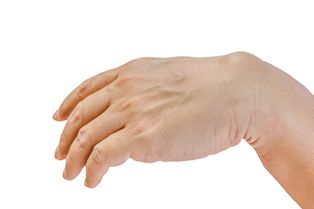0
item(s)
Cart is empty
|
Home
::
|
Ganglion Cyst

Ganglion cysts are referred to as non-cancerous lumps which commonly develop alongside the tendons or joints of your wrists or hands. They can also appear in the ankles and legs. Ganglionic cysts are usually round or oval in shape and are filled with fluid that looks like jell.
Ganglion cysts can be of different types, the small-sized maybe like the size of a pea while the larger ones, on the other hand, can be about 2.5 centimeters in diameter. Pains can be felt if they press on a close nerve. Their position may sometimes hinder the movement of the joints.
In the event that you are not comfortable with your ganglion cyst, the cyst may be drained with the use of a needle by your doctor. Surgical cyst removal of the cyst is also an option. But in case there are no symptoms, treatment may not be required. In the majority of the cases, the cysts disappear themselves.
What are the Causes of Ganglion Cysts?
What causes ganglion cyst still remains unknown. A research suggests that the tissue of the joint can be broken down due to trauma which forms a small cyst that later joins together to form larger, and more visible mass. The most probable theory involves a flaw in the joint capsule or tendon sheath which permits the tissue of the joint to swell.
What leads to the formation of ganglion cyst is not entirely understandable.
Here are three possible causes, all associated with joint stress.
• Joint stress may cause rupture of the joint capsule surrounding the joint. As a result, the synovial fluid passes into the tissue around the joint. The reactions between the fluid and the tissue then lead to the formation of a thick cystic fluid and the cyst wall.
• Joint stress may cause damage to connective tissue in the area. If the fluid accumulates then a cyst may appear.
• Joint stress may cause mesenchymal cells to stimulate the secretion of mucin
What are the Symptoms of Ganglion Cysts?
Ganglion cysts can usually be identified by their characteristics.
Position: Ganglion cysts are always found close to the joint, usually at the top or back of the wrist, but possibly at the palm side of the wrist, in the palm at the bottom of the finger or on the top of the end joint of a finger. Ganglion cysts can also appear on top of the foot, ankle or sometimes on the knee.
Pain: the pains that occur from Ganglion cysts may be painful and on the other hand it may not be painful. The pain can be felt when the nerve is pressed.
Shape and Size: Ganglion cyst is roughly circular and less than 2.5 cm in diameter or the same as the size of the golf ball. Some are very small. They can be felt like lumps below the skin, or they cannot be noticed at all.
They can be soft or hard and must move freely underneath the skin.
The ganglion cyst that appears at the base of the fingers may look like a pea-sized lump below the skin.
If the cyst appears at the top of the finger joint, it can be an arthritic spur; the skin above the cyst may be thin and can be a groove down the fingernail which is just above it.
Sometimes the area around the cyst can feel numb, and grip strength can be reduced in the affected hand.
Ganglion Cyst Treatment
Treatment for a Ganglion Cyst requires restoring the circulation and blood flow to the affected structures in your wrist. Pain is caused when swelling, inflammation and decreased circulation generate a blockage, which causes blood flow to be interrupted or slowed. Treatment for this issue requires breaking up the accumulated fluids in your wrist to allow for improved healing and quicker recovery.
Products recommended for symptoms of swelling, redness, pain, and inflammation, and if coolness makes your pain feel better:
Ice Substitute Poultice
Bruise Relief Liniment
Muscle Therapy Massage Oil
Products recommended when swelling and inflammation are gone, but you still feel pain, stiffness, weakness, and/or sensitivity in cold and damp weather, and if heat makes your pain feel better:
Pain Relief Liniment
Muscle Therapy Massage Oil
